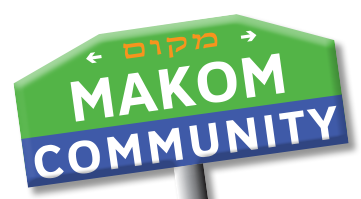We came into this fourth unit with a whole slew of excellent questions that our inquisitive students have been wondering about all year. Here’s a sampling:
- Who’s telling the story?
- Who do they think is listening?
- Where are the women in the stories?
- Why don’t we hear what they say, think, and feel?
- How do all of these fathers, brothers, and sons know what’s expected of them?
- Why are the women shown as basically property of the men and never do anything for themselves?
- Were the people who wrote the Torah sexist, or were they just writing in a time and culture where it was normal for women to be men’s property and stuff like that?
- Why do the stories all focus on heroic men? Are there any stories about heroic women?
Woah, right? To begin answering some of these questions, we dug into the two seemingly contradictory accounts of the creation of people. In the first chapter of Genesis, “God created Earthling. Betzelem Elohim (in God’s image) God created him. Male/masculine and female/feminine God created them.” If you find this description confusing, you’re in good company. We’ve got what seems like one Earthling, that is somehow god-like, is both male and female, and is maybe also plural.
How are people like God? What does it mean for both maleness and femaleness to be included here?
- People are all different.
- They can destroy.
- They can build.
- They can love.
- No one is more important than anyone else.
- Everyone is holy and godlike.
In the second chapter of Genesis, God creates the Earthling, and notices that the Earthling is lonely. God wants to find an ezer kenegdo (a challenging helper) for the Earthling. God brings him all the animals, but they don’t fit the bill. So God puts the Earthling to sleep, takes out one of his ribs, builds it up into a woman, and brings her to the Earthling. That’s a totally different story from Genesis 1!
Here were some of your kiddo’s initial reactions:
- I don’t like that in this version women are just another form of man.
- Yeah, taking a part of a man and making it a woman, that’s not how it works! We’re separate people. We’re independent women!
- I like Genesis 1 more— they’re created at the same time and they’re equals.
- How can the Torah say both of these versions? It doesn’t make sense!
One of the ways we resolved some of this discomfort was by reflection on what it means for someone to be an ezer kenegdo, a special kind of partner who both helps and opposes or challenges the person they’re helping:
- You’re helping them, but also challenging them by competing with them.
- You can challenge them by loving them. Sometimes love is a challenge, like when people have feelings and they don’t know what they mean.
- Someone who loves you unconditionally and will also disagree with you.
- Someone who connects with you.
In order for a person to be a good ezer kenegdo for someone else the people need to be pretty equal. When we reflected on who these people could be for us, we realized that our answers didn’t necessarily have anything to do with gender the way the Earthling’s ezer seems to.
Who can be an ezer kenegdo for me?
- My brother.
- My friends and family.
- All of the people I love.
- A few of my friends because we can disagree.
- My teacher at school.
